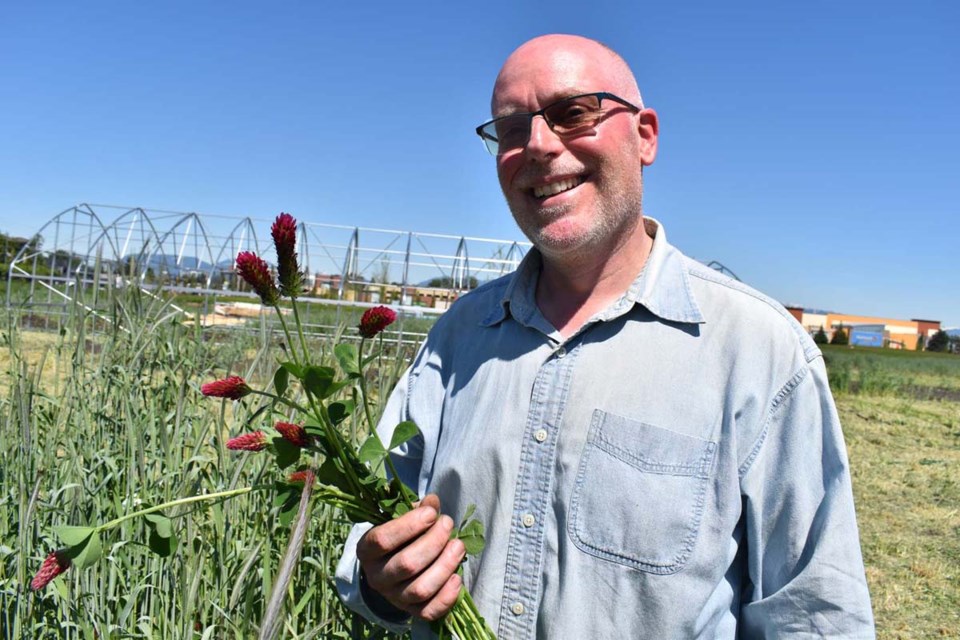Michael Bomfield imagines men in bowler hats coming on the train from Vancouver in the early 20th century with their rifles to shoot a few rounds on the Garden City Lands, which was once a popular shooting practise site.
It might have been the thousands of bullets, or maybe other activities, that caused contamination of the soil on the Garden City Lands, of which 20 acres has been turned into a demonstration and teaching farm by Kwantlen Polytechnic University.
Needless to say, when the soil’s lead, selenium, chromium, molybdenum, arsenic, copper, nickel and antimony content were found to be above allowable thresholds for farming, a solution was needed.
To cover up the contaminated soil, 21,000 cubic metres of soil was brought from the airport to the farm, topping it up by 70 centimetres. The soil brought from the airport was largely mineral soil with very little living matter, in fact, less than one per cent. Compost and manure were also added.
While the main concern was to cover the contaminated soil so the land could be farmed, the end result was a “cutting-edge” solution for the peat base and the carbon trapped in it, explained Bomford, a faculty member at KPU’s Institute for Sustainable Food Systems.
Garden City Lands is a remnant of the Greater Lulu Island Bog. Peat is water-logged, partly decomposed vegetation and farming it would have released a lot of carbon-emitting gases into the air, Bomford explained.
“This whole notion of layering mineral soil over peatlands, in order to avoid destroying the peat and avoid greenhouse gas emissions — that’s pretty unique. The only other place I know of where it’s been tried is in Norway,” Bomford said.
He calculated that, if they had farmed in the peat, they would have released 35,000 kilograms of carbon-dioxide equivalent per hectare per year, adding to the already large amounts of greenhouse gases entering the atmosphere.
However, with 70 centimetres of topsoil, the KPU farm is going in the opposite direction, pulling in 5,795 kilograms of carbon per hectare per year, according to Bomford’s calculations.
“Clearly the reason we put the mineral soil down is because of the concern about contamination above agricultural thresholds, but I see it as a real potential to try, I think, a unique tactic to both protect peat and to still allow farming,” he said, adding it might take a few years to test whether this works.
This is the second year Kwantlen Sustainable Agriculture program students are farming the Garden City Lands, located right in the heart of Richmond. They are producing food for their weekly farmers markets and learning how to run a farm.
Students are involved in farm planning, management and sales throughout the year, and, in summer, there are three full-time students working at the farm under the supervision of the farm manager.
Last year, there were two market garden beds, and, this year, one will be left with a cover crop to improve its quality, but they have added four more beds to grow vegetables for their Tuesday markets outside the Richmond Cultural Centre.
Seedlings, or transplants, are currently growing in the geodesic dome, a naturally heating greenhouse, which KPU had built in October.
They have also built a high tunnel greenhouse on rails, which will be moved from year to year — eventually, there will be three of them.
A big focus at the farm is to improve the soil quality. As a winter cover crop, they planted rye and crimson clover, which is currently being mowed down to mulch and will be worked into the soil adding organic molecules — carbon chains captured through photosynthesis —pulling carbon “out of thin air,” Bomford explained.
“Our farming will be continuously about improving the soil — that will go on forever,” he said.



